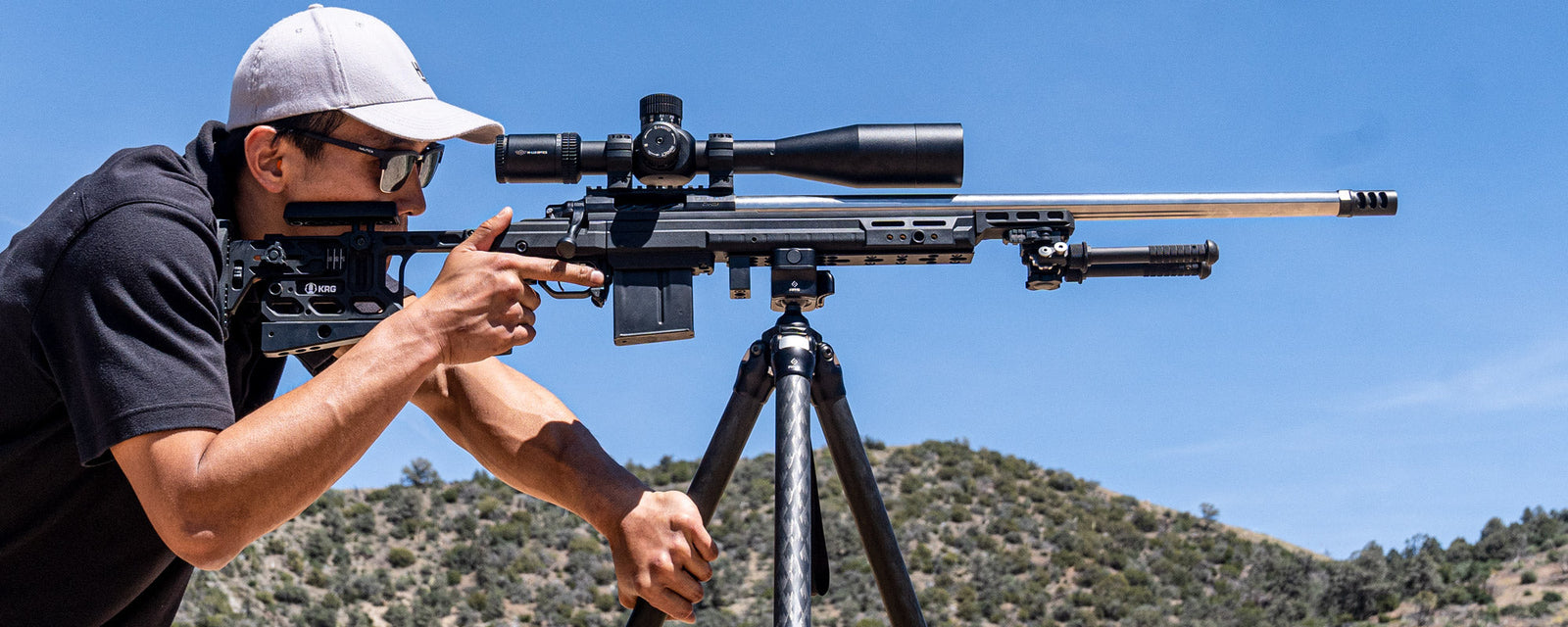Hi, I’m Bob Coles, knowyourzero.com
I’d like to talk to you today about reticle position in scopes - whether the first focal plane or second focal plane. So stay tuned, ‘cause we got a lot of information we’re going to cover.
Hi, welcome back to knowyourzero.com . And, once again we’re in the shop, and today we’re talking about optics. You probably wonder why I’ve got a couple rifles set up here. Well, they’re very similar: both are M98 Mauser actions, both are chambered off the Winchester 284 cartridge, custom barreling…
22 - 284 wildcat, 6mm - 284 wildcat.

They both have 4-20 x 50 optics on them. The difference is we have a second focal plane and we have a first focal plane. You can see by the image up here, on the second focal plane the focus is behind the turrets, so it’s more toward the eye bell. What that creates, when you’re looking through the optic, is you’re going to get a crisp, dark reticle - and when you increase magnification, the image grows. So when the image grows, the math you do on a mil-dot is going to change. It won’t be the same at low power as it is at max power. Each manufacturer states their own power where you can do the math. Some are 10 power, which is where the mil-rad works… but if you crank it up to 20, it throws everything off because the image is larger and the bracketing looks smaller. So you have to take that into account.
Many times, beyond 500 yards there’s a lot of math and head games going on to try to make that quick shot and that quick kill… where if we transition over to first focal plane, if you can see in the image over here that the reticle is placed in front of the turrets. And what that does is when you increase magnification, the reticle and the object increase in the same proportion. So the math aspect of it is - the math at 4 power is the same as the math at 20 power. So when you’re bracketing an image, regardless of the yardage, you just do the same math and you’re spot-on. The issue with a first focal plane (and if you watch my first video when I did a test review on the PentaLux TAC-VF - when I was dialed down to four power and it was a bright, sunny day, and the reticle seemed to wash out, I turned on some illumination and I could see them) - all the first focal planes have that inherent wash out of the reticle. You’re not going to get that on a second focal plane, it’s going to stay dark and bold and thick, regardless of magnification.
So, what I did on the second focal planes to get around doing all the head games and the math was I just put ballistic tape on my turret, and I have it set up for point blank range. So this particular rifle out to 480 yards, I have a 2-inch kill zone. I can hold dead-on to anything out to 480, squeeze the trigger, and I’ve got a kill shot. I just dial - and all of my DOPE that’s already on there - so I did that to make it easy, and I don’t have to do math and think on a second focal plane. I like how this has a thicker reticle regardless of in the dark woods, sitting on a hill in bright sunny day, it’s nice for that.
This one (PentaLux TAC-VF) here I like because when you’re doing long shots, math is the same and you just go with it. You don’t have to worry about getting the tape, “is it calculated right”, all that. So, with the two focal planes, “is one better than the other”: it’s a decision you have to make. What’s your application going to be? Is it going to be hunting, light dark light dark, or precision shots, way out there. So just kick that around, what you want to do. You can see on the two images I have up here, the reticle is mounted in different places, which explains why in this one the image grows, and in the first focal plane why [the image and reticle] grow at the same rate. Both awesome setups, both hold zero. Great money for the glass. Just do a little research on the decision you have to make.
Stay tuned, ‘cause I’ve got a lot more videos coming up





Leave a comment (all fields required)